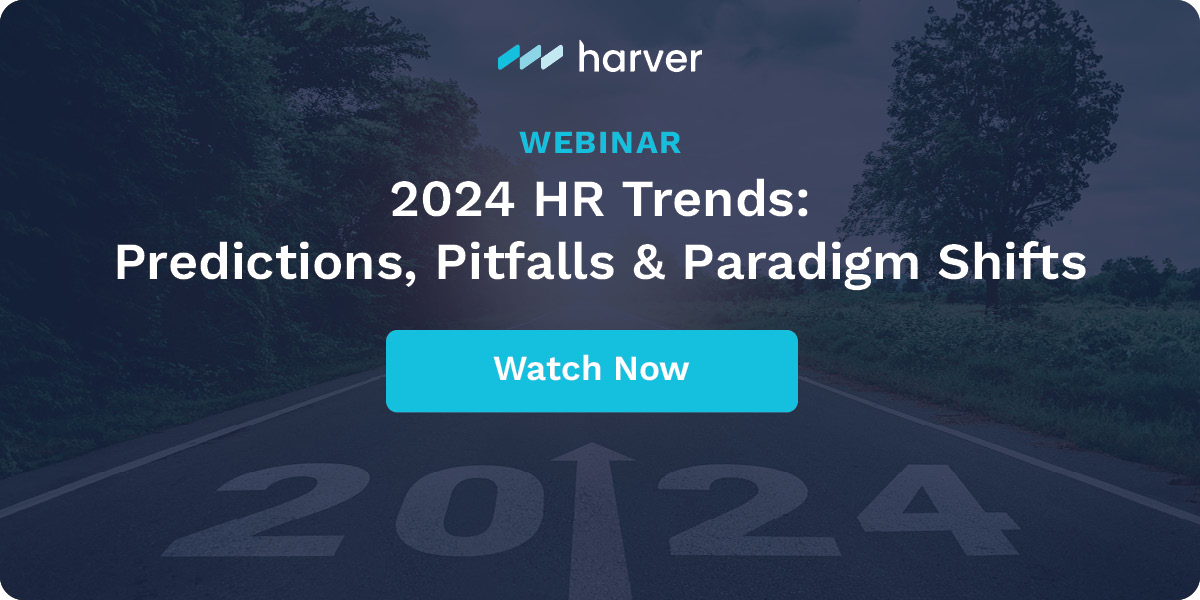Talent professionals around the world are preparing for 2024. But it isn’t easy, as this year’s uncertainty and volatility will continue and evolve in the new year.
So how can you, as a talent leader, prepare for anything when it feels like needing to prepare for everything? By planning based on what you know so far, fortified by 2024 HR trends and predictions from Harver’s experts.
What's in?
[WEBINAR] 2024 HR Trends: Predictions, Pitfalls & Paradigm Shifts
Our latest webinar, now available on-demand, shares HR’s key trends and predictions for 2024. Watch now to learn what’s in store for TA leaders and recruiters.
As a quick preview…There’s the shaky economy and labor shortages. Skills-based hiring enabling strong talent acquisition and talent management strategy. And AI simultaneously saving and scaring us.
Read on for some highlights from our 2024 HR trends webinar, featuring our panel of experts from around the Harver family:
- Dr. Ben Porr, Chief Customer Officer,
- Ali Good, VP, Product Marketing,
- Arnold Sowole, SVP, Product & Engineering, and
- Andrew Avrin, Head of Customer Success – International.
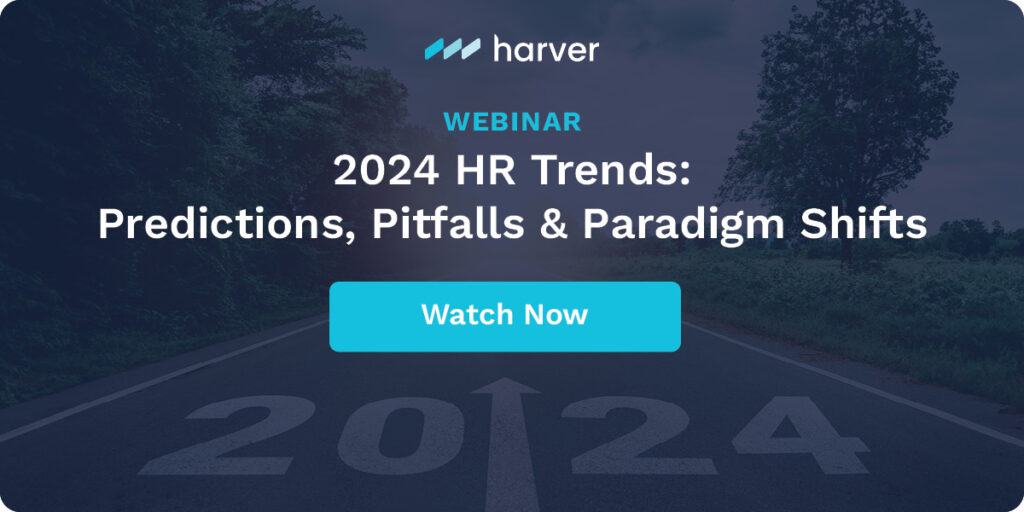
2024 HR trend: Volatility and uncertainty – and how to prepare and adapt
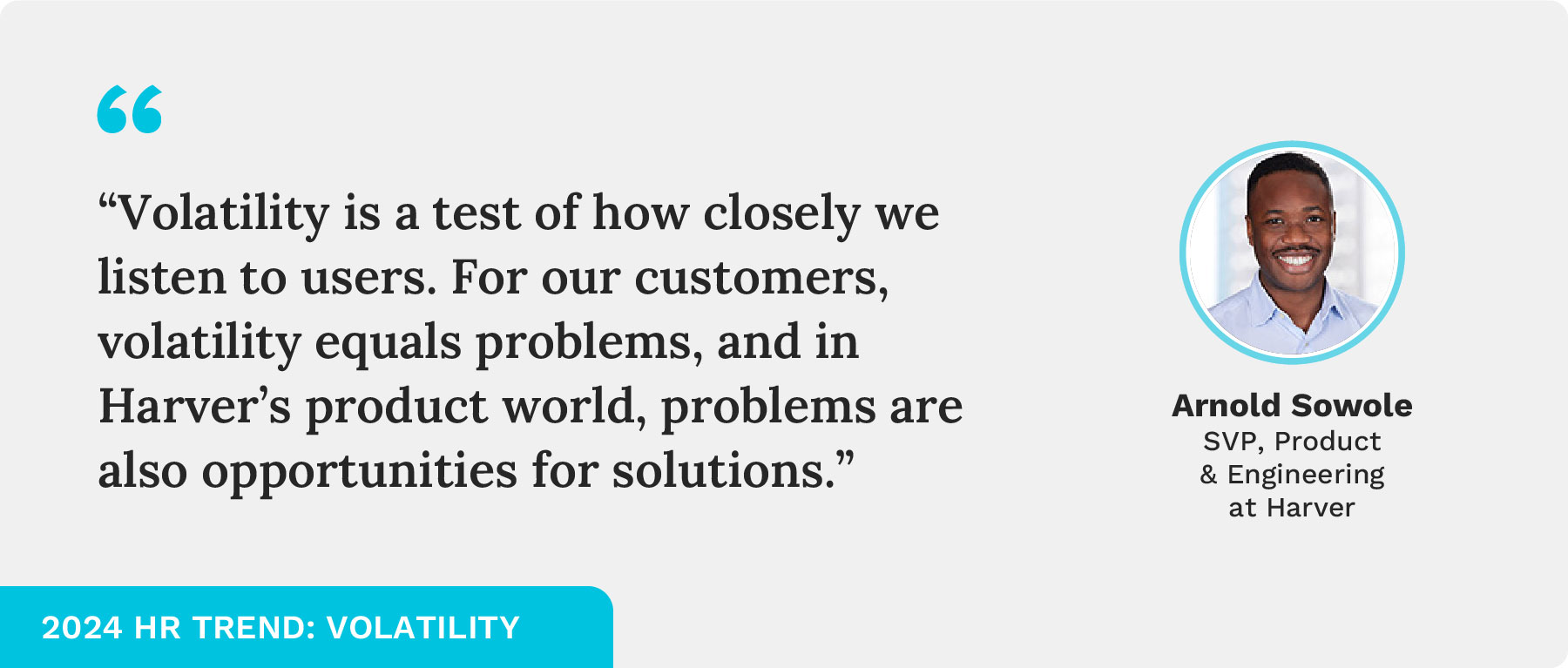
As Harver’s SVP of Product & Engineering, Arnold shared how volatility can also be a positive from a product perspective: “Volatility is a test of how closely we listen to users. For our customers, volatility equals problems, and in Harver’s product world, problems are also opportunities for solutions.”
For you and other talent professionals, there’s opportunity here, too. Your users, so to speak, are your recruiters, hiring managers, and job seekers. How well are you listening to their expectations, like Gen Z demanding development opportunities? How quickly can your recruiting tech and processes adapt to external labor marketplace shifts and skills gaps among your internal workforce?
2024 HR trend: Recruiter challenges like lack of candidates
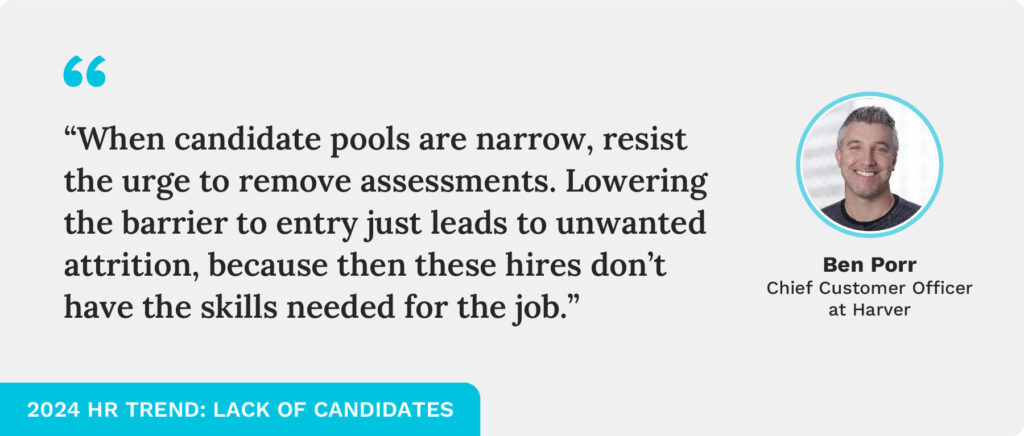
We discussed 2024 challenges like recruiter burnout and constantly juggling unwanted attrition. John, one of our webinar attendees, asked about what to do when there simply aren’t enough good-fit candidates.
As an I-O psychologist with decades of knowledge, Ben shared advice on what NOT to do. “When candidate pools are narrow, resist the urge to remove assessments. Lowering the barrier to entry just leads to unwanted attrition, because then these hires don’t have the skills needed for the job.”
In fact, reverting to a manual process makes the original problem even worse. “We know a manual process introduces bias that’s not measurable.” The effects of that bias further narrow candidate pools. Instead, retaining assessments to measure skills can enable identifying job seekers who have transferrable skills that correlate with day-one success on the job.

2024 HR trend: Skills-based hiring unlocks stronger TA and TM strategies
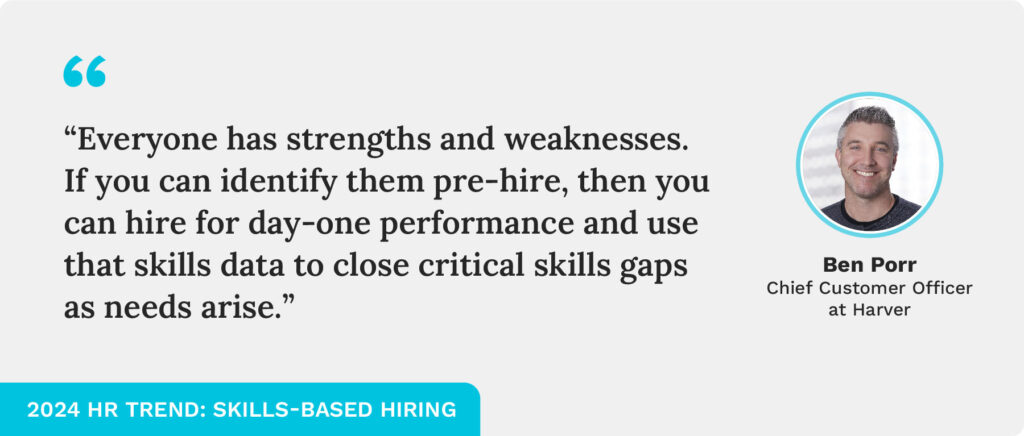
Exhausted by unwanted attrition and fast-in, fast-out cycles? The best talent management strategy starts with a particular talent acquisition strategy: skills-based hiring. It’s the evolution of competency-based hiring.
At the heart of skills-based hiring is assessing two things. First, does the job seeker have the skill you need? And, second, what level of proficiency have they developed? “Everyone has strengths and weaknesses,” says Harver’s Chief Customer Officer. “If you can identify them pre-hire, then you can hire for day-one performance and use that skills data to close critical skills gaps as needs arise.”
Without this critical data on your candidates and internal workforce, how can you make quality and speedy talent decisions? No wonder 77% of global employers struggle to find qualified workers.
Like what you see?
Don’t miss out. Subscribe to our quarterly digest to get the latest TA and TM resources delivered right to your inbox.
2024 HR trend: The impact of AI on hiring
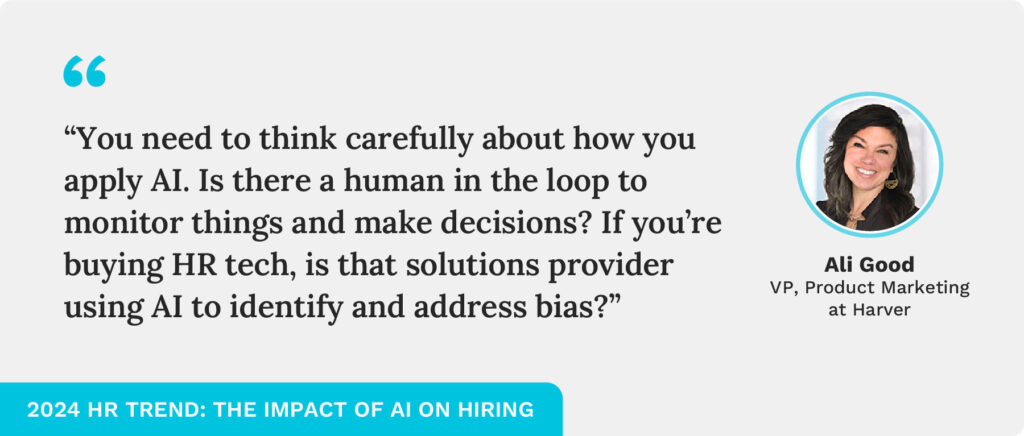
There’s a lot of confusion about the underlying technology behind many HR tools. Here’s a quick primer for you:
- Intelligent automation is rules-based automation of mundane tasks, like interview scheduling
- AI is a machine simulating human cognition, like analyzing large amounts of workforce skills data
- Generative AI goes beyond cognition to creation, like a conversational recruiting chatbot
These innovations have rich potential to boost efficiency and close gaps for the lowest-skilled workers. However, there are concerns about the risk of AI legislation, potential for bias, and other considerations.
According to Harver’s VP of Product Marketing: “You need to think carefully about how you apply AI. Is there a human in the loop to monitor things and make decisions? If you’re considering HR tech, do they use AI to identify and address bias?”
Is your organization ready for 2024’s challenges and opportunities?
2024’s uncertainty is coming at volatile speed, and employers everywhere need to be ready as they compete for talent. That might a tough goal for some, considering more than 3 out of 4 employers are struggling to find appropriately skilled talent.
Watch our full on-demand 2024 HR Trends webinar to get ahead of your competitors.
Or, even better, reach out to schedule a demo. We’re here to help answer any questions you have about 2024’s hiring uncertainty, biggest recruiting challenges, skills-based hiring benefits, and more.
